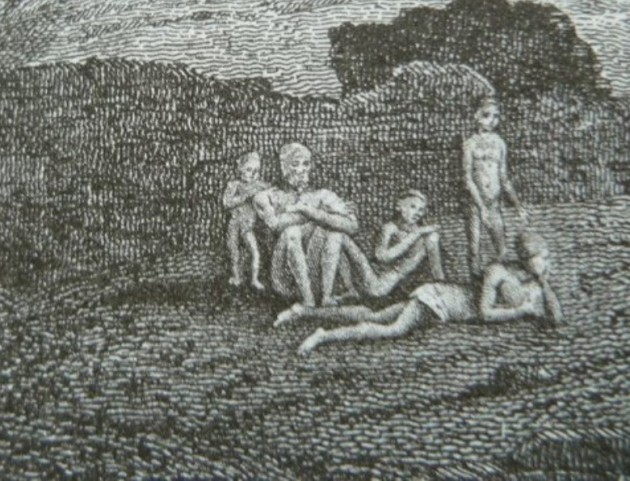A church deserted in turn
Remains to weigh up the lifespan of Philae's Coptic church. According to sources, the last known bishop to the see of Aswan under which this sanctuary fell goes back to 1068. By then, the Christian community had already dwindled and it is generally surmised that the Coptic church was abandoned between the 11th and the 13th century. A quote from 13th century Arab historian Abu al-Makarim[1] refers to the « ruins of a church somewhere near the cataract »
. From which we can infer that in his view the sanctuary had already been abandoned. The history of this church went into a long eclipse, until the end of the 18th century. In 1798, Philae was visited by Bonaparte[2]'s scientific expedition which reported extensive ruins. Teasingly, a detail on one of the engravings representing the temple in the Description of Egypt figures a group of naked natives whom their guise marks out from Egyptian Arabs. Some have wanted to see in these groups the progeny of the tribes Procopius had written about. This detail inspired much speculation: could it be that Sudan and Nubia's Beja people, indeed some others too were the ultimate descendants of the ancient Blemmyes and Nobatae? A sober examination of the sources forces us to take into account a long solution of continuity between late antiquity and modern Egypt and to accept that the memory of Isis' last worshipers has well and truly vanished.
 Informations[4]
Informations[4]The thematics of memory and forgetting is a trope also developed in Arab sources discussing Egypt's far-flung past. It is worth mentioning in this context Masudi[5]'s text concerning the loss of proficiency in hieroglyphics. This passage develops the idea of oblivion not as a result of destruction or the upshot of invasion but rather a sort of fatality leading to cultural extinction. Yet this author does not for all that completely forego catastrophic theories as he wonders at strange relics of the Egyptian religion. His “bodies piled high”, these heaps of corpses being extracted from “caves” are certainly ancient mummies as were sometimes gathered in necropolis but to whom the Arab historian assigns here a baleful fate, betokening the “cataclysmic” end of a forgotten civilisation leaving on Egyptian soil multiple traces which still fire imaginations.








